|
 Secure Site
Secure Site
|
 |
Archive for the 'Natural Awakening' Category
 Zen Timepiece with brass bowl
Discover the healing power of sound with singing bowls, tuning forks, and other musical instruments.
Music can move us to tears, help us feel calm or comforted, or inspire us to action. The rhythmic sounds of nature (think of waves breaking on a beach) can bring us into balance. Now researchers are learning more about how music and sound directly affect the healing process.
EVIDENCE. A 2008 study at the University of Maryland School of Medicine revealed that listening to music you consider joyful for 30 minutes helps release endorphins to relieve pain and reduce stress, which can otherwise overload your immune system and lead to a host of health conditions. Another study completed last year at Seattle University in Washington showed that listening to Mozart for 12 minutes three times a week can lower systolic blood pressure by seven points.
YOUR BODY TUNES IN. Researchers say that when you listen to music and sounds, your heartbeat, breath, and brain waves begin to slow down or speed up in response to what you’re hearing. Your body syncs up with the sound, and the result can be an enhanced relaxation response—stress lifts, your heartbeat slows, muscles relax, and your body releases feel-good endorphins—or improved energy levels, depending on the rhythm.
GET STARTED. Try these ways to benefit from sound therapy:
EASE STRESS:
Use tuning forks and singing bowls
“Sonic tools” like tuning forks and singing bowls can soothe an overexcited nervous system, says Jonathan Goldman, author of The Seven Secrets of Sound Healing (Hay House, 2008). Singing bowls create a calming noise when you run a mallet around the rim, and tuning forks hum when tapped.
Try it: Use these tools as frequently as needed, says Goldman. For tuning forks, go to Healing Sounds or Biosonics. For crystal singing bowls, visit Crystal Tones. For Tibetan singing bowls, try Now & Zen, Inc., Headquarter Store, 1638 Pearl Street, Boulder, CO 80302.
RELIEVE INSOMNIA:
Listen to a healing CD
“Music is to the nervous system what nutrients are to the body,” says Joshua Leeds, author of The Power of Sound (Healing Arts Press, 2001). He designs audio CDs with music, special effects, and sounds from the natural world to enhance various activities, such as falling asleep.
Try it: See Sound Remedies or Steven Halpern Inner Peace Music.
SHARPEN YOUR MIND:
Learn an instrument
Studies show that daily practice of a musical instrument can keep the brain young and pliable. It can also help relieve tension as your body actually resonates with the soft energies of the instrument.
Try it: Find a local teacher and ask about beginner lessons. Practicing for five minutes can clear tension and a foggy mind. Use your Zen Timepiece in the morning to wake up to a singing bowl for a gentle and progressive awakening.
Our Zen Timepiece’s acoustic 6-inch brass bowl-gong clock is the world’s ultimate alarm clock, practice timer, and “mindfulness bell.”
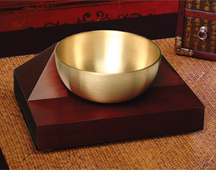 Natural Sound Alarm Clocks & Sound Therapy It fills your environment with beautifully complex tones whenever it strikes. In the morning, its exquisite sounds summon your consciousness into awakening with a series of subtle gongs that provide an elegant beginning to your day. Once you experience the Zen Timepiece’s progressive awakening, you’ll never want to wake up any other way. It also serves as the perfect meditation timer.
adapted from Natural Health Magazine July 2010, by Elizabeth Casey
 Singing Bowl Clocks by Now & Zen called The Zen Timepiece
Posted in Bamboo Chime Clocks, Chime Alarm Clocks, Goodness, Meditation Timers, Meditation Tools, mindfulness practice, Natural Awakening, Progressive Awakening, Well-being, Zen Timepiece by Now & Zen, Zen Timers
 Bach's wake up call The theme of spiritual life as a kind of awakening is a metaphor found in every culture and tradition. You might enjoy listening to music by the great German composer Johann Sebastian Bach, who chose the theme of awakening for a cantata he composed in 1731. Inspired by the Gospel of Matthew 25:1–13, it opens with the words, “Wachet auf, ruft uns die Stimme” (Sleepers awake! The Voice calls to us).
Rolf Sovik, PsyD, is the author of Moving Inward: The Journey to Meditation. He is the president of theHimalayan Institute, and serves as the director of the Institute’s branch center in Buffalo, New York.
 Musical Chime Alarm Clock with Real Acoustic Sounds Now & Zen
1638 Pearl St.
Boulder, CO 80302
(800) 779-6383
Posted in mindfulness practice, Natural Awakening, nature, Now & Zen Alarm Clocks
 Morning meditation Sense the Stillness in the Morning
For yoga instructor Alison Novie, mornings make an ideal time for meditation — perhaps more than any other time of day. “The sun’s about to rise, but it’s still sort of dark and quiet,” says Novie, who wakes at 5:00 a.m. to meditate. “I get up, brush my teeth, light a candle, and then sit for half an hour. The calm energy I get from that morning meditation carries me through the day.”
You don’t have to be a regular yoga or meditation practitioner to reap the benefits of a morning meditation ritual. Start with five minutes daily, using the guidelines that follow. Set you Meditation Timer from Now & Zen for 5 minutes. Then over the course of a few weeks — or when you are ready — gradually work up to 10 minutes. Remember, with meditation it’s quality, not quantity, that matters.
Start with awareness. Rather than lunge out of bed, Novie suggests waking up slowly. “Spend a few minutes just becoming conscious of the sensations of your body. Awareness is such a beautiful way of entering your day.” Once you’re up, resist the temptation to check your e-mail, flip on the radio, or do any of the other countless things that draw you out of yourself and into the concerns of the world. Instead, keep the focus inward.
Find a comfortable spot. Practice your five minutes of meditation anywhere you like (the bedroom floor, a favorite chair) except the bed, where you may fall back to sleep. To enhance the sacred aspect of her meditation space, Novie set up a small altar in her living room that she uses only for meditation, giving the space a positive energy of its own. Be sure to set your Meditation Timer from Now & Zen for 5 minutes.
Sense your breath. Close your eyes. Feel your breath moving in and out of your body without controlling it. Bring your attention to the rise and fall of your abdomen or to the tip of your nose. The more awareness you bring to breath and body, the more grounded in your body you’ll become. This, in turn, will help relieve some of the stress that comes with getting through your morning.
Don’t try to block your thoughts. Your mind will wander — that’s what it’s designed to do. Rather than try to fight off thoughts as they emerge, acknowledge them, but don’t engage them. And give yourself some slack — meditation is, after all, a practice, not perfection.
Our Zen Timepiece’s acoustic 6-inch brass bowl-gong clock is the world’s ultimate alarm clock, practice timer, and “mindfulness bell.”
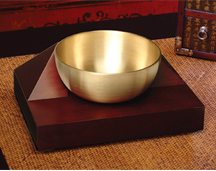 Meditation Gong Timer with Singing Bowl It fills your environment with beautifully complex tones whenever it strikes. In the morning, its exquisite sounds summon your consciousness into awakening with a series of subtle gongs that provide an elegant beginning to your day. Once you experience the Zen Timepiece’s progressive awakening, you’ll never want to wake up any other way. It also serves as the perfect meditation timer.
adapted from Body + Soul, March 2006

Now & Zen’s Clock Shop
1638 Pearl Street
Boulder, CO 80302
(800) 779-6383
Posted in Bamboo Chime Clocks, Chime Alarm Clocks, intention, Natural Awakening, Now & Zen Alarm Clocks, sleep, Sleep Habits
 Sanmonji, Sleeping Cat 1992, woodblock print Sleep is an essential bodily function, like eating and breathing. But more and more, we minimize its importance, and the health effects can be devastating. Besides affecting how we feel and function day to day, a chronic lack of sleep have harmful effects on our emotional and spiritual well-being.
Besides allowing our bodies and brains to refuel, sleep allows for our souls to recharge.
Here are two relaxation techniques to use as you wind-down in the evening:
Use a mind-body technique. Doing a bedtime relaxation exercise, such as the following, can help you fall asleep or get better, deeper sleep. Paced breathing, inhale through your nose for a count of four. Hold for a count of seven. Exhale through your mouth for a count of eight. As you breathe, rest the tip of your tongue on the ridge behind your front teeth. When you exhale, it should create a shooshing sound. Repeat four times.
Mental Muscle Relaxation
Lying down or sitting comfortably, close your eyes and take a few deep breaths. Starting at the top of your head, notice whether there’s tension in your scalp and forehead. If there is, let it go. Progress all the way down your body, assessing each muscle group and mentally releasing any tension.
Our Zen Timepiece’s acoustic 6-inch brass bowl-gong clock is the world’s ultimate alarm clock, practice timer, and “mindfulness bell.” It awaken you with the beautiful tones of a singing-bowl, used by many sound therapist.
It fills your environment with beautifully complex tones whenever it strikes. In the morning, its exquisite sounds summon your consciousness into awakening with a series of subtle gongs that provide an elegant beginning to your day. Once you experience the Zen Timepiece‘s progressive awakening, you’ll never want to wake up any other way. It also serves as the perfect meditation timer. Available in 5 wood styles, including bamboo. Remember to set your Zen Alarm Clock with the 10 minute programmed chime sequence to awken you in the morning relaxed and refreshed.
adapted from Body + Soul, November 2009 by Tracy Gaudet, M.D.
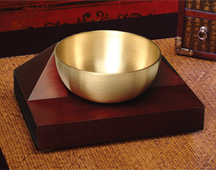 Singing Bowl Alarm Clock with Natural Sounds to Awaken You Now & Zen – The Gradual Alarm Clock Store
1638 Pearl Street
Boulder, CO 80302
Posted in Japanese Inspired Zen Clocks, Natural Awakening, Now & Zen Alarm Clocks, Progressive Awakening, Sleep Habits
 Painting of Morpheus, Phantasos and Iris by baron Guérin - Morpheus God of Dreams & Sleep So much has been written about sleep, you’d think we’d all be wrapped in the arms of the slumber god Morpheus by now, dreaming sweet dreams and waking up refreshed. But for too many Americans a sound sleep remains, well, a dream. Instead they spend their nights tossing and turning and their days walking around bleary-eyed and exhausted.
You won’t sleep well if you don’t feel comfortable in your surroundings. This is why you should devote time to preparing the best possible sleep environment. Feng shui, the ancient Chinese art of placement and design, promotes bedrooms that are clutter-free and decorated with colors that engender feelings of serenity.
First, create a boundary around your bedroom, says feng shui expert Terah Kathryn Collins, author of The Western Guide to Feng Shui: Room by Room (Hay House, 1999). “The bedroom should be reserved for two things: sleep and romance,” she explains. Next, eliminate anything that increases activity or stimulates the mind such as TVs, computers and exercise equipment. “If you see your computer, you’ll think of emails you haven’t returned. Your treadmill will remind you that you need to work out more,” Collins says. If you must have a TV in the bedroom, place it in a cabinet with doors, so it can be out of sight when not in use. Hide any other must-haves behind an attractive, free-standing screen.
 Feng Shui, bed placement promotes relaxation Also, place your bed so you can see the door. “If the door is hidden from view, that increases anxiety,” Collins says. It also shouldn’t be directly in front of the door, but rather off to one side so that you don’t have the sense you can be easily intruded upon. The direction the bed points is also important. Collins says insomniacs should face the headboard west, which promotes relaxation and helps them to sleep past dawn. If your insomnia is depression-related, however, she suggests facing the headboard toward the east, which “speeds people up.” Sleeping with your head pointing north maintains overall balance, while south promotes intuition and dream recall.
 Ohara Koson (Shoson) 1877-1945 two carp and white lotus 1933 Colors can also affect your slumber. It’s best not to have gray, blue or pure white as the dominant color, Collins says, for the simple reason that “cool colors such as these don’t complement or ‘match’ your skin.” The problem? “Though they can be dramatic, they don’t make most people feel truly comfortable and relaxed.” Try this experiment: Find a pure white sheet and one in a skin-tone color such as beige, and hold them up to your face in front of a mirror. “Most people will notice that the skin-tone is more attractive against their skin, while the cool contrast of the white can make them look washed out and sallow,” Collins says. So choose pastel colors reminiscent of skin tones and/or the deep rich hues that come from skin tones, such as beige, chocolate brown, peach and terracotta.
Finally, make your bedroom a clutter-free zone. Remove piles of clothes and reduce that bedside stack of magazines and books to just one of each. “The more stimuli you can eliminate, the better,” she says. Collins adds that while mirrors can make rooms feel bigger and brighter, they also can be a distraction at night because reflections can be quite activating. Her suggestion: Place curtains over mirrored closet doors so they can be “closed” at night and opened during the day.
One of the ultimate Zen like experiences is waking-up from a great slumber refreshed and energized. Your mind and body are harmoniously one, both alert and focused. Having a refreshed mind and body are two keys to a natural and Zen lifestyle. Waking up in the morning should not be a loud and abrupt awakening, but rather it should be a peaceful positive experience. The right natural alarm clock can transition your deep and tranquil sleep into a serene start to consciousness. Imagine a long-resonating Tibetan bell-like chime waking you up to a beautiful morning experience.
The right alarm clock can be the most beneficial investment for you. With our Now & Zen natural alarm clock you are awakened more gradually and thus more naturally. Now & Zen is focused on creating a naturalistic lifestyle, and our clocks are an example of our philosophy.
adapted from Natural Solutions, December 2005 by Matthew Solan
 Zen Chime Alarm Clock, Digital Black Lacquer Chime Clock, clocks to make your bedroom a 'clutter-free' zone Now & Zen – The Gradual Chime Alarm Clock Store
1638 Pearl Street
Boulder, CO 80302
(800) 779-6383
Posted in Bamboo Chime Clocks, Chime Alarm Clocks, Japanese Inspired Zen Clocks, Natural Awakening, Now & Zen Alarm Clocks, Progressive Awakening, Sleep Habits
 trouble waking up? Worry No More…
Boulder, Colorado—an innovative company has taken one of life’s most unpleasant experiences (being startled awake by your alarm clock early Monday morning), and transformed it into something to actually look forward to.
“The Zen Alarm Clock,” uses soothing acoustic chimes that awaken users gently and gradually, making waking up a real pleasure. Rather than an artificial recorded sound played through a speaker, the Zen Clock features an alloy chime bar similar to a wind chime. When the clock’s alarm is triggered, its chime produces a long-resonating, beautiful acoustic tone reminiscent of a temple gong. Then, as the ring tone gradually fades away, the clock remains silent until it automatically strikes again three minutes later. The frequency of the chime strikes gradually increase over ten-minutes, eventually striking every five seconds, so they are guaranteed to wake up even the heaviest sleeper. This gentle, ten-minute “progressive awakening” leaves users feeling less groggy, and even helps with dream recall.
 waking up happy Now & Zen’s Chime Alarm Clock Store
1638 Pearl Street
Boulder, CO 80302
(800) 779-6383
 Peaceful Wake Up Chime Alarm Clocks
Posted in Natural Awakening, sleep, Sleep Habits
 zen stones It’s hard to believe in the sages’ promise of higher consciousness—until that breakthrough moment happens to you. Here, a report from those who’ve been there.
By Deborah Willoughby
Edgar Mitchell was on his way home. Two days before he had been on the moon collecting rock samples, and now he was speeding through space accompanied by two other astronauts. Gazing at Earth and the stars through the tiny window of Apollo 14, he was engulfed by a new and startling sensation: an all-encompassing aura of universal connectedness. All sense of boundaries dissolved, and he saw that he, his companions, and everyone and everything on the shining planet in the window were held in a luminous web of consciousness. What is more, he knew with absolute certainty that, as he put it later, “the glittering cosmos itself was in some way conscious.”
Mitchell was experiencing a spontaneous glimpse of what the sages of the yoga tradition call higher consciousness—a direct, intuitive experience of the infinite field of awareness that underlies and pervades the entire universe. When this experience is fully expanded, different traditions give it different names—samadhi, nirvana, enlightenment, turiya, shunyata, Brahman, Christ Consciousness, Absolute Truth, Atman, God, the Self, Supreme Consciousness—but whatever they call it, spiritual masters tell us that this experience of an all-pervasive consciousness reveals the truth about ourselves and the world we inhabit: it is all One. There is no division, no multiplicity, no separation. Everything—the astonishing variety of living beings; nature’s myriad shapes, textures, and forms; the sun, the stars, the clouds, and the wind in the trees—all of it is a manifestation of an indivisible field of Consciousness. The goal of human life, the sages tell us, is to meet that Consciousness within ourselves and to know ourselves as That.
The sages also tell us all of our problems, indeed all of the world’s problems, can be traced to a single source: we misunderstand the nature of reality. Hypnotized by outward appearances, we misread the world around us. We see multiplicity instead of unity, separation instead of wholeness. Because we don’t understand that all beings share one life force, one consciousness, we blunder about, damaging ourselves by damaging others. It all boils down to an epic misunderstanding—and leaves us looking for fulfillment in all the wrong places.
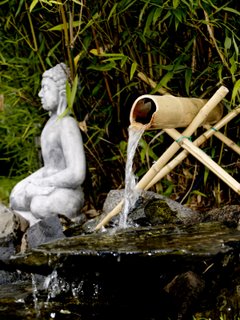 stillness practice “We are all looking for the peace and freedom and security of perfect union with the Atman,” Swami Prabhavananda and Christopher Isherwood write in How to Know God, their classic commentary on theYoga Sutra. “We all long desperately to be happy. But ignorance misdirects us. It assures us that the Atman cannot really be within us, that we are nothing but individuals, separate egos…. We seek security in the accumulation of possessions, or by the destruction of our imagined enemies. We seek happiness through sense gratification, through every kind of vanity and self-delusion. We seek peace through the intoxication of various drugs. And in all these activities we display an energy of heroic proportions…. It is tragically misdirected energy. With less effort, we might easily have found union with the Atman, had we not been misled by our ignorance.”
The good news is that this veil of ignorance is readily lifted. Experiencing Consciousness is simplicity itself, the sages tell us—after all, it is our own true nature. As the 14th-century master, Vidyaranya Yati put it, “You are whatever you know yourself to be. This is a simple law. Brahmavit Brahmaiva bhavati. The knower of Brahman becomes Brahman. The moment you know that you are inseparable from Universal Consciousness, you become that Universal Consciousness.” Five centuries later, Swami Vivekananda put it another way: “The moment I have realized God sitting in the temple of every human body, the moment I stand in reverence before every human being and see God in him—that moment I am free from bondage, everything that binds vanishes, and I am free.” My own teacher, Swami Rama, had another way of expressing it: “It’s as simple as flipping a light switch. Suppose this room is kept dark for one hundred years. How long will it take to light this room? One second.”
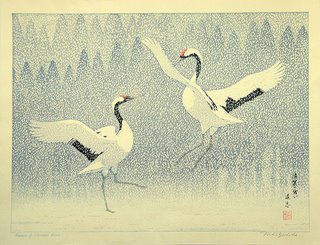 sousaku hanga woodblock print by Yoshida Toshi (ca 1970's Swamiji’s spiritual heir, Pandit Rajmani Tigunait, takes the same view, as I discovered one winter morning while complaining to him about feeling spiritually stuck. Panditji leaned forward, took my face in his hands, and turned my head a few degrees. “It’s right there,” he said forcefully. “There! Adjust your gaze a fraction, you’ll see it. Everything is Consciousness. Everything!”
Most of us don’t see it—at least not at first and not easily. It’s like an Escher print. First you see one thing—black ducks flying across a white sky—and then your perspective shifts a hair and you are looking at a picture of white fish swimming through black water. Once you’ve seen the fish, you see them every time you glance at the print. Spiritual teachers say that the unity underlying the apparent diversity is like that—palpable, obvious, and undeniable. The trick is to learn to refocus our gaze.
To do that, it helps to know what we’re attempting to see. The image on the opposite page seems unremarkable, but if you know it’s a stereogram, you will study it more closely. Look at it long enough and in the right way, and the bees recede into the distance and the hummingbirds float across the page in three dimensional rows. That’s what meditation is, looking within from the right angle often enough and long enough for the illusion of separateness to drop away and Reality to snap into focus.
Swami Rama was fond of saying, “It is easy to meet that Infinity within you—to attain that awareness, you just have to be silent.” It’s easy. Sit down, close your eyes, draw your attention inward, quiet your mind, and you are “There”—at least in theory. For most of us, the experience of meditation is quite different. We sit down, close our eyes, draw our attention inward, and come face-to-face with a noisy, scattered, unruly mind. We mean to focus on the mantra but find ourselves composing the grocery list instead; the mind jumps to the day ahead or the upcoming weekend, the vacation we’d like to take or the one we just had; it busies itself sorting through the latest dustup at the office, skitters through the mess in Iraq, then slides off into what we’re getting the kids for Christmas. Silence eludes us—and so does an awareness of Infinity.
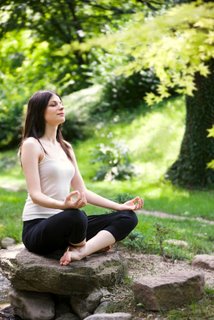 stillness It’s the classic chicken-and-egg dilemma. The experience of Oneness is the fruit of a disciplined meditation practice. But a disciplined meditation practice unfolds from a taste of that fruit. Once it’s had a taste of Unitary Consciousness, the mind is drawn to it like a bee to a blossom and is no longer so easily distracted when we sit for meditation. But without that initial taste, we’re at a bit of a loss. We believe—or would like to believe—what the scriptures, the sages, and our teachers tell us: that we are inextricably entwined in a nourishing web of Consciousness. But our day-to-day experience is quite different—we’ve become accustomed to a vision of duality, trained to see ourselves as separate from each other and from the natural world, and so that’s what we see. We’re seeking a deeper, richer vision of ourselves and our world but we don’t quite know how to bring it into focus.
It came into focus for Edgar Mitchell when he was 240,000 miles out from Earth, seeing his home planet cradled in a nest of stars. His work was essentially finished, the moonwalk had been a success, and he had time to reflect on the mission, time to “absorb the magnificence and beauty of the whole process.” As he explained it in an interview with The Monthly Aspectarian, as a result of “seeing Earth as it is in the heavens, the precise experience for me was to recognize that the molecules of my body and the molecules of the spacecraft—I had studied stellar formation and knew how the furnaces of the stars and galaxies created our chemical elements—I suddenly realized that those were my molecules being manufactured and prototyped in those stars. Instead of being an intellectual experience, it became a very deep, personal, emotional one, a knowing. It was such a profound experience that I went into a different realm of seeing things.”
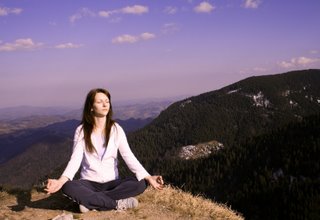 Meditation on the mountain I had a similar experience during a pilgrimage to Kedarnath, a shrine high in the Himalayas. Much less arduous than a journey to the moon, pilgrimage is a time-honored way of cultivating an expanded vision. Step away from the demands and distractions of daily life, leave the familiar behind, and go—deliberately and with determination—to a place known for its spiritual energy. Pandit Rajmani explains it this way: “If you are seeking a certain kind of knowledge and experience, go to a place where it is readily available. If you are seeking knowledge and experience in technology, go to MIT. If you are seeking an experience of the inner dimension of your life, go to a place charged with spiritual energy. When you go to such places with the intention of connecting yourself to the flow of all-pervading Consciousness, your individual consciousness is expanded and transformed by the collective consciousness which permeates that place.”
Mecca, Jerusalem, Assisi, Banaras, Allahabad, Mount Kailash, Mount Fuji, and Mount Kilimanjaro are among the places Consciousness has shaped in Her own image. Here at these and other shrines, the perceived barrier between the physical realm and the subtle realm thins to the point of transparency, and the all-embracing matrix of Consciousness shines through.
I caught a glimpse of it last summer in the Himalayas. From the moment I began the nine-mile climb from the village of Gaurikund to Kedarnath, I was flooded with joy. Everything was perfect—sunlight on thickly wooded hillsides, snowcapped peaks framed by impossibly steep gorges, waterfalls spilling down at every turn, a chilly afternoon rain, the blister on my right heel, a trail that got rougher and steeper as the day wore on, the clammy guesthouse, even the cold-water-only shower. During the two days we stayed on the Kedarnath plateau and through the long walk back to Gaurikund, perfection reigned.
Nothing I did, nothing anyone around me did, could dislodge the all-encompassing beatitude. On the trek back, I deliberately brought things to mind that had been troubling me before I set foot on the trail—my mother’s slide into dementia, a financial snafu, a friend’s duplicity—but they had lost their sting. Everything I knew, remembered, or could imagine was supported and nourished by a munificent web of Consciousness.
For three days, I saw it and felt it. The feeling has faded, but the memory remains. And it is that memory that pulls me into meditation practice, erasing much of the tendency to distraction. My mind settles and moves toward silence more readily now. It hasn’t become as easy as flipping a switch—not by a long shot—but having walked in the light, however briefly, I have come to understand why Swami Vivekananda said: “We put our hands over our eyes and weep that it is dark.”
Deborah Willoughby is the founding editor of Yoga International.
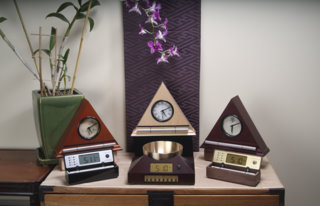 Yoga and Mediation Timers Now & Zen
1638 Pearl St.
Boulder, CO 80302
(800) 779-6383
Posted in Meditation Timers, Meditation Tools, mindfulness practice, Natural Awakening, nature
 Sweetest Sounding Alarm Clocks with Persistent Singing Bowl Chime Chime Zen Alarm Clocks with Tibetan-Singing Bowl deliver the Sweetest, Most Persistent Sounds that are Unique and Acoustic
What makes this gentle awakening experience so exquisite is the sound of the natural acoustic chime, which has been tuned to produce the same tones as the tuning forks used by musical therapists. According to the product’s inventor, Steve McIntosh, “once you experience this way of being gradually awakened with beautiful acoustic tones, no other alarm clock will ever do.”
 Elegant Women. Courtesy of the Japan Ukiyo-e Museum Now & Zen – The
Gradual Chime Alarm
Clock Store
1638 Pearl Street
Boulder, CO 80302
(800) 779-6383
Posted in Chime Alarm Clocks, Natural Awakening, nature, Now & Zen Alarm Clocks, wake up alarm clock
 Just Say No to a Snooze Button, use a Zen Clock Just Say No to a Snooze Button
Most modern alarm clocks include a “snooze button” mechanism which allows the user to go back to sleep for a brief period after the initial alarm.
While this may make it easier for some people to “face the day,” here at Now & Zen we feel the whole concept of a snooze button is “all wrong.”
People want snooze buttons because they want to awaken gradually. And this is only natural because just as our bodies fall asleep gradually, our bodies also want to wake up gradually. However, with a regular, snooze button-equipped alarm clock the user is initially “startled awake” by the alarm, and then continually startled awake with each press of the snooze button. This is not the way to treat your body because it creates a kind of merry-go-round of multiple “rude awakenings.”
As an alternative we recommend using our Zen Alarm Clock, which wakes users gradually with a built-in 10 minute progression of gradually increasing acoustic chimes. It really is a better way to get up in the morning.
Zen Alarm Clocks make waking up a beautiful experience. And once you experience the Zen Clock’s gradual 10 minute chime progression, you will never want to wake up any other way again.
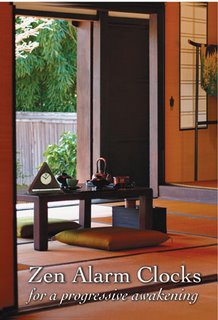 Zen Clocks are an Alternative to Snooze Button Clocks that Shorten Your Life! Now & Zen
1638 Pearl Street
Boulder, CO 80302
(800) 779-6383
Posted in Natural Awakening, sleep, Sleep Habits, wake up alarm clock
 zen and the art of waking up, alarm clocks by Now & Zen, Inc. Zen Clocks provide an exquisite waking experience with natural acoustic chimes or gongs—once you wake up with a Zen Alarm Clock, you’ll never want to wake up any other way! These beautiful products are also in high demand for use as meditation or yoga timers.
Now & Zen Headquarter Store
1638 Pearl Street
Boulder, CO 80302
(800) 779-6383
 zen and the art of waking up, chime alarm clocks by Now & Zen
Posted in Bamboo Chime Clocks, Natural Awakening, Zen Alarm Clock
« Previous Page — « Previous Entries
Next Entries » — Next Page »
|
|
|
|